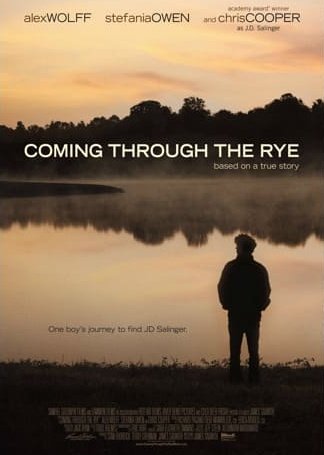Will Investing in a Film Noir Put You in the Black?
Film Investing Advice from the Wall Street Journal. This film investing article discusses how many films from the blockbuster "Avatar" to low-budget independent films like "Paranormal Activity," rely on hedge funds or individual investors to help provide funding. They highlight that film investing pay offs can be as high as 50% to 100% in the first three years, IF a film is successful, which is a big "if."
As with any business investment, you want to see a well-conceived marketing and distribution plan that makes sense and isn't built on hope.
The film investing article then goes on to advise potential movie investors how to minimize their risk, making them aware of many of the things that could possibly go wrong during filming. The author tells film investors, "as with any business investment, you want to see a well-conceived marketing and distribution plan that makes sense and isn't built on hope."
He continues, "To improve your odds of success, the first-and most crucial-question to ask is: "How will I get repaid?" (Note: as you know, FilmProposals has been saying this for years and is exactly why we created our Business Plan Tools for Film, to help you answer this question).
Things to note in this article for your information and also to use in your Business Plan:
- Some firms are even trying to set up a futures market for investors to bet on box-office receipts, though the industry is lobbying Congress to ban that practice before it begins.
- "Clearly, there is a certain glamour to calling yourself a "movie investor" and possibly hanging around a Hollywood set with Matt Damon or Angelina Jolie. And the payoff can be steep: Movie investments can generate returns of 50% to 100% in the first three years or so, when the bulk of the profits are realized, and then produce a recurring revenue stream lasting several decades as a movie generates ongoing royalties and income from DVD and soundtrack sales, television, pay-per-view, cable and streaming video."
- "Paranormal Activity," which was reportedly produced for $15,000, has taken in roughly $200 million world-wide, according to movie-data service Box Office Mojo. The original "Saw," which cost about $1.2 million to make, brought in some $103 million. "
- "The stark reality is that most films lose money, says Schuyler Moore, an entertainment lawyer in Los Angeles."
- "As with other alternative assets, such as real estate, commodities or investment-grade wine, movies are best used for diversification. After all, even in sour economies people continue to go to the cinema. But don't go crazy-alternative assets as a group should constitute no more than about 5% to 15% of an overall portfolio."
- "Hedge funds, which are generally open to wealthy investors, often invest in Hollywood's bigger films, making them a good way to get a piece of a blockbuster-though the impact is diluted by the fund's other investments. Individual investors, meanwhile, can find opportunities through word of mouth. Movies are in production all over the country, and state film commissions can often point you toward the production companies. So, too, can local media lawyers and talent agencies."
- "What to avoid: Investing with a producer who wants to make a movie but has no relationship with distributors, has no foreign sales lined up and hasn't explored tax credits that might exist."
- "...don't worry too much about the script. You don't even need to read it, since a good business plan should include a one-page synopsis of the story line."
Source and Full Wall Street Journal Article: Will Investing in a Film Noir Put You in the Black?, May 29, 2010©
Film Investor Primer - How to Invest in Movies
Film Investor Guide
- Film Investor Ultimate Guide (For Filmmakers)
- Film Investor Primer (For Investors)
- 10 Things You MUST Do To Attract Film Investors
- Preparing for Film Investors
- Film Investor Business Plan Tips
- How to Find Film Investors
- Pitching to Film Investors
- Working With Film Investors
- Film Investor Tools & Templates
While our FilmProposals Bundles & Toolkits will save you hundreds of hours with prewritten text and templates and speed up your learning curve by showing you how to complete complicated financial projections, there is still a lot of information to process. We designed this FREE Film Business Plan Course to be sent once per week to break the process of writing your business plan into manageable pieces, and to keep you accountable and focused. In case you can't see the sign up form, try here.
FilmProposals - 2024 Financing Toolkits & Bundles
DIY Toolkits, Legal & Finance Service Bundles
See All Financing Toolkits, Financing Bundles & Film Legal Packs
Gold Toolkit
DIY Templates- Financing Manual
- Financial Projections Template
- Business Plan Templates (Narrative & Documentary)
- Investor Agreement Outline
- Film Budget Template
- Indie Film Pitch Deck
- Custom Indie Film Database
- BONUSES (MPA Market Stats, Dealmaking, Investor Tips, ++ )
- Regular Price $303, Save $124
Gold Toolkit + Financials Bundle
Most Popular- Full Gold Toolkit
- + Professional Sales Projections & Investor ROI (10 Films)
- Regular Price $802, Save $103
Platinum Bundle
NEWEST!- Full Gold Toolkit
- + Professional Sales Projections & Investor ROI -10 Films (Reg $499)
- + Film PPM Investor Agreement (Reg $499)
- + Filmmaker Legal Pack (Reg $129)
- Regular Price $1430, Save $231
FilmProposals Tools and Templates
- Film Financing Bundles
- Film Financial Projections Template
- Film Business Plan Template
- Documentary Business Plan Template
- Film Financing and Investor Manual
- Film Budget Template
- Indie Film Pitch Deck
- Film Investor Agreement Outline
- Film Investor Tip Sheet
- Filmmaker Legal Pack
- Indie Film Database
- FREE Business Plan E-Course






